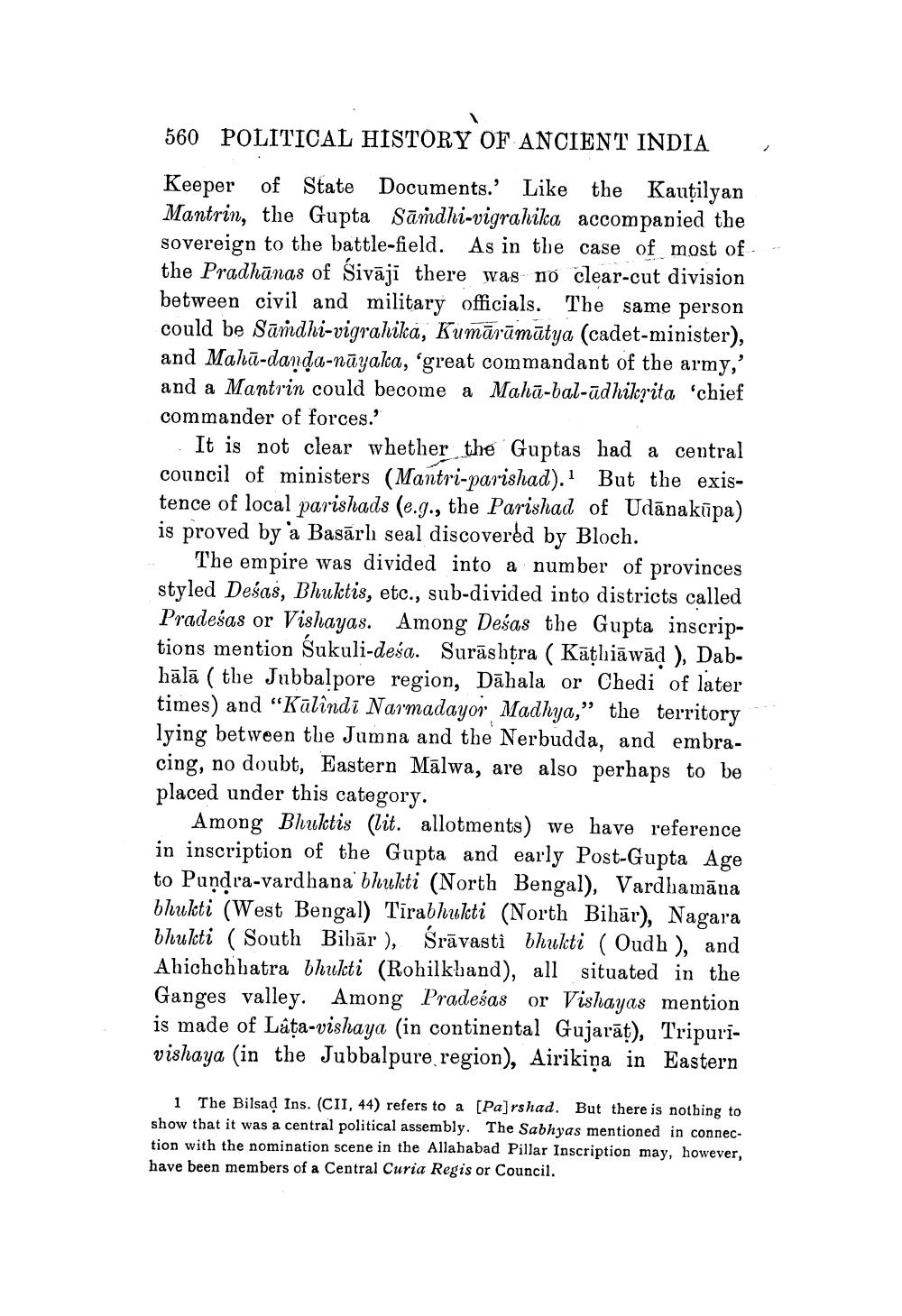________________
560 POLITICAL HISTORY OF ANCIENT INDIA
Keeper of State Documents.' Like the Kautilyan Mantrin, the Gupta Samdhi-vigrahika accompanied the sovereign to the battle-field. As in the case of most of the Pradhanas of Sivaji there was no clear-cut division between civil and military officials. The same person could be Samdhi-vigrahika, Kumārāmātya (cadet-minister), and Maha-danda-nayaka, 'great commandant of the army,' and a Mantrin could become a Maha-bal-adhikrita 'chief commander of forces.'
It is not clear whether the Guptas had a central council of ministers (Mantri-parishad). But the existence of local parishads (e.g., the Parishad of Udanakupa) is proved by a Basarh seal discovered by Bloch.
The empire was divided into a number of provinces styled Desas, Bhuktis, etc., sub-divided into districts called Pradesas or Vishayas. Among Desas the Gupta inscriptions mention Sukuli-desa. Surashtra (Kāṭhiāwād), Dabhala (the Jubbalpore region, Dahala or Chedi of later times) and "Kalindi Narmadayor Madhya," the territory lying between the Jumna and the Nerbudda, and embracing, no doubt, Eastern Malwa, are also perhaps to be placed under this category.
1
Among Bhuktis (lit. allotments) we have reference in inscription of the Gupta and early Post-Gupta Age to Pundra-vardhana bhukti (North Bengal), Vardhamana bhukti (West Bengal) Tirabhukti (North Bihar), Nagara bhukti (South Bihar), Śrāvasti bhukti (Oudh), and Ahichchhatra bhukti (Rohilkhand), all situated in the Ganges valley. Among Pradeśas or Vishayas mention is made of Lâța-vishaya (in continental Gujarat), Tripurivishaya (in the Jubbalpure region), Airikina in Eastern
1 The Bilsad Ins. (CII, 44) refers to a [Pa]rshad. But there is nothing to show that it was a central political assembly. The Sabhyas mentioned in connection with the nomination scene in the Allahabad Pillar Inscription may, however, have been members of a Central Curia Regis or Council.




